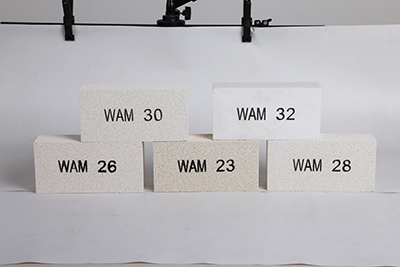The Best Solution For Energy Saving And Reducing CO2 Emission
The Best Solution For Energy Saving And Reducing CO2 Emission
 Tel: +86-532-85717690/85717352/85832089
Tel: +86-532-85717690/85717352/85832089 E-mail: wam@wamcn.net
E-mail: wam@wamcn.net
Different lightweight insulating brick brands are used for various construction projects.
Being it in a thatched roof building to even the tallest high-rise buildings, insulating bricks are very important construction components.
The reason for their wide usage isn’t far-fetched. Firstly, insulating brick is highly durable, and they are relatively low cost to purchase.
Nevertheless, whenever you need any lightweight insulating brick brands, always source or some from a trusted manufacturer.
With this, you are sure of premium insulating bricks with the best price value.
Production Steps of Different Lightweight Insulating Brick Brands
Although there are some slight modifications, the over manufacturing process of insulating bricks have remained unchanged.
Generally, insulating bricks manufacturers in China adopt four major stages in the manufacture of insulating bricks.

The various steps include; preparation of the soil, molding, drying, and burning.
1. Preparation of Soil
In the course of preparing the soil to be used in the production of insulating brick, different preparation processes are involved thus;
a. Removal of Top Soil
Here, some loose materials present in the soil is removed by digging the soil to a depth of 200mm
b. Digging and Spreading
This stage involves the digging deep to a depth of 600-1200mm for a fine soil that can be used.
c. Cleaning
This involved cleaning the soil of particles such as stones, pebbles, and vegetable matter.
d. Weathering
This involves exposing the soil to the atmosphere where it can soften for some weeks. This also imparts strength to the soil
e. Blending
Here, a calcareous or sandy soul is added to enhance the quality of the soil to be used and mixed thoroughly.
f. Tempering
This involved kneading the soil on foot to homogenize the constituents.
2. Molding of Bricks
This is the stage in which insulating brick is made into metric shapes referred to as modular bricks.
The general and actual dimension of the bricks is usually 19cm X 9cm X 9cm
During the molding process, different molding techniques such as hand, ground, table, and machine molding can be used.
3. Drying of Bricks
Before burning the molded brick, they have to first dry to avoid being damaged.
During the drying of the brick, drying can be done either naturally (AKA hack drying under the sun) or artificially using a special dryer that gets heat from a special furnace.
4. Burning of Bricks
In order to impact the required strength, hardness as well as boost the density of the brick formed, insulating bricks are usually burnt in kilns.
Burning the brick up to the temperature of 640oC is only enough to cause some physical changes on the bricks.
For chemical changes that involve the fusing of silica and alumina present in the brick to join together, the brick is usually burnt to about 700-1000oC.
With this, the brick is said to be strong and stable enough to overcome easy crack or collapse.
Bottom Line
Lightweight insulating bricks manufacturers in China adopt the best practice in the manufacture of insulating brick.
Irrespective of type, different lightweight insulating bricks brands are produced through the same manufacturing process.
This production process falls into four major steps, which include; preparation of soil, molding, drying, and burning.
All these manufacturing processes contribute to giving insulating bricks their characteristics lightweight, durable and strong nature.
For the best lightweight insulating brick for all your building projects, do contact reputable manufacture for the best product.